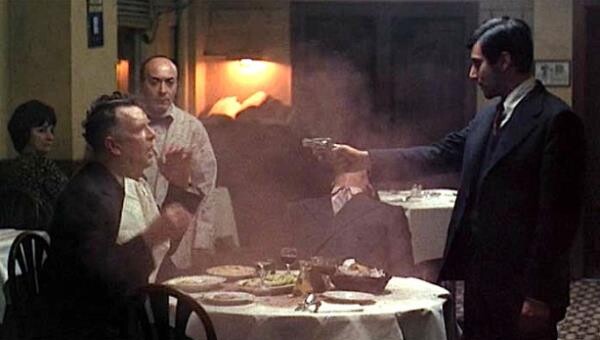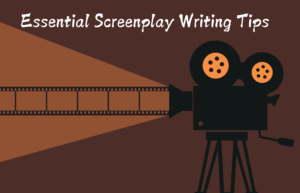We’ve all been there—staring at a blank page or an unfinished screenplay, knowing something’s not quite right but not sure what it is. The truth is, many screenwriting mistakes boil down to a few common oversights. Let’s dive into the top five screenwriting mistakes and, more importantly, how you can avoid them. I’ll even throw in some examples from iconic films to show you how it’s done—or, in some cases, how it’s not done.
1. Weak Concept: Starting with an Unclear or Unoriginal Idea
Your screenplay’s concept is its backbone. Your story will struggle to stand out if the core idea is weak, unclear, or unoriginal. A weak concept often results from trying to mash too many ideas together or relying on clichés.
Consider The Truman Show—the concept is crystal clear: “What if a man’s entire life was secretly a TV show?” This intriguing, high-concept idea immediately draws people in because it’s unique and thought-provoking. The film explores themes of privacy, reality, and identity stemming from this single, strong concept.
Before diving into writing, test your concept. Can you sum it up in one or two sentences, like The Truman Show? If your idea feels muddy, take time to refine it. A well-developed treatment can help solidify your concept. And don’t forget, Coverage can provide valuable feedback on whether your concept is strong enough to carry a full screenplay.
2. Flat Characters: Failing to Develop Relatable, Multidimensional Characters
Your characters are the heart of your story. If they’re one-dimensional or unrelatable, your audience won’t care about their journey. Flat characters often result from a lack of depth—when writers don’t spend enough time exploring their motivations, flaws, and growth.
In Breaking Bad, Walter White’s character is anything but flat. He starts as a mild-mannered chemistry teacher diagnosed with cancer who turns to cooking meth to provide for his family. Over time, he evolves into a ruthless drug lord. This transformation is compelling because it’s grounded in Walter’s deep-seated desire to control his fate and leave behind a legacy. His famous line, “I am not in danger, Skyler. I am the danger,” reveals his descent into a darker persona, adding layers to his character.
To create multidimensional characters:
- Dive deep into their backstory, motivations, and internal conflicts.
- Consider writing character bios or diaries from your characters’ perspectives.
- If you’re unsure about your characters, seek feedback, which can help pinpoint where your characters may need more development.
3. Poor Pacing: Rushing or Dragging Out Your Story
Pacing is everything. If your screenplay rushes through important moments or drags in the middle, you’ll lose your audience’s attention. Poor pacing often stems from a lack of planning or from including scenes that don’t move the story forward. A costly screenwriting mistake.
The Godfather is a masterclass in pacing. It takes its time to build tension and develop characters, but it never feels slow. Consider the scene where Michael Corleone kills Sollozzo and McCluskey. The tension builds slowly as Michael considers his actions in the restaurant. The slow pacing heightens the suspense, making the sudden burst of violence even more impactful.
The scene is also powerful because of the subtext. Before the hit, Michael calmly asks to use the restroom, a seemingly mundane request that hides his true intentions. The careful pacing of the scene allows the audience to fully feel the weight of Michael’s decision, making it a pivotal moment in his character’s arc.

Outline your screenplay thoroughly before writing. Break your story down into beats and ensure that each scene serves a purpose. A well-structured treatment can help you identify potential pacing issues early on.
4. Excessive Exposition: Telling Instead of Showing
One of the biggest screenwriting mistakes is relying too much on exposition. When characters spend too much time explaining things, it slows down the story and can make it feel unnatural. Screenwriting is a visual medium, and it’s often more effective to let actions and visuals do the talking.
In Blade Runner 2049, director Denis Villeneuve uses visuals to tell the story rather than relying on heavy dialogue. For example, when K discovers the memory of a wooden horse that he thought was implanted is actually real, he doesn’t need to say a word. His stunned expression and the haunting score convey everything we need to know about his emotional turmoil.
The original Blade Runner also exemplifies this in its iconic “Tears in Rain” monologue. While it’s a piece of dialogue, it’s used sparingly and poetically, summarizing the humanity of a replicant in a few lines: “All those moments will be lost in time, like tears in rain. Time to die.” The line is powerful because it’s earned through the film’s visual storytelling and pacing.
Challenge yourself to convey your story visually. Ask yourself, “Can this be shown rather than told?” If you find your characters explaining too much, consider how you can use visuals, actions, or subtext instead. Our coverage service can be especially helpful here, offering an outside perspective on whether your script is leaning too heavily on exposition.
5. Neglecting Revisions: Submitting a First Draft as a Final Draft
Every screenplay needs revision. It’s easy to fall in love with your first draft, but submitting it without thorough revisions is a major mistake. Even the best writers must revisit and refine their work to iron out inconsistencies, plot holes, pacing issues, and many other screenwriting mistakes.
Star Wars went through multiple drafts before becoming the film we know today. The original script featured a very different story, with characters like Anakin Starkiller and a more politically focused plot. It was only through extensive revisions that George Lucas streamlined the narrative and created the iconic characters and adventure we love.
Consider this early dialogue from a draft of Star Wars:
– Annikin Starkiller: “You’re a princess?”
– Leia: “Yes. What are you?”
– Annikin: “I’m a warrior.”
Even the best screenwriters make these screenwriting mistakes, but through revisions, this clunky exchange evolved into the more dynamic and engaging interactions we see between Luke and Leia in the final film.
Never submit a first draft. Take time away from your screenplay, then return to it with fresh eyes. Be ruthless in your revisions—cut scenes that don’t work, rewrite dialogue that feels off and ensure your story is as tight as possible.
Avoiding these common screenwriting mistakes is crucial to crafting a screenplay that stands out. Remember, writing is a process, and every draft gets you closer to the final product. Whether you’re just starting out or polishing your latest script, being aware of these pitfalls will help you create a stronger, more engaging story. And if you’re ever in doubt, don’t hesitate to use professional coverage or treatment services to help guide your revisions. Keep at it, and happy writing!




